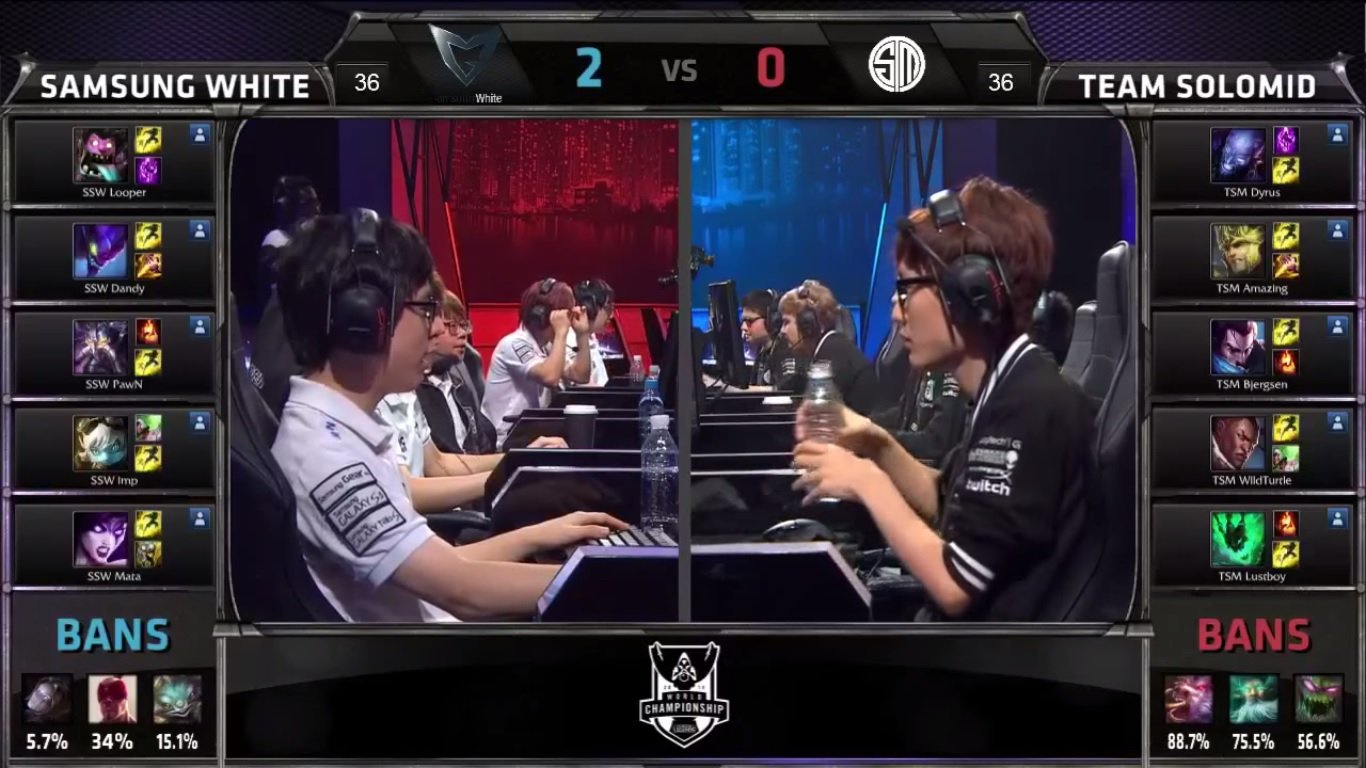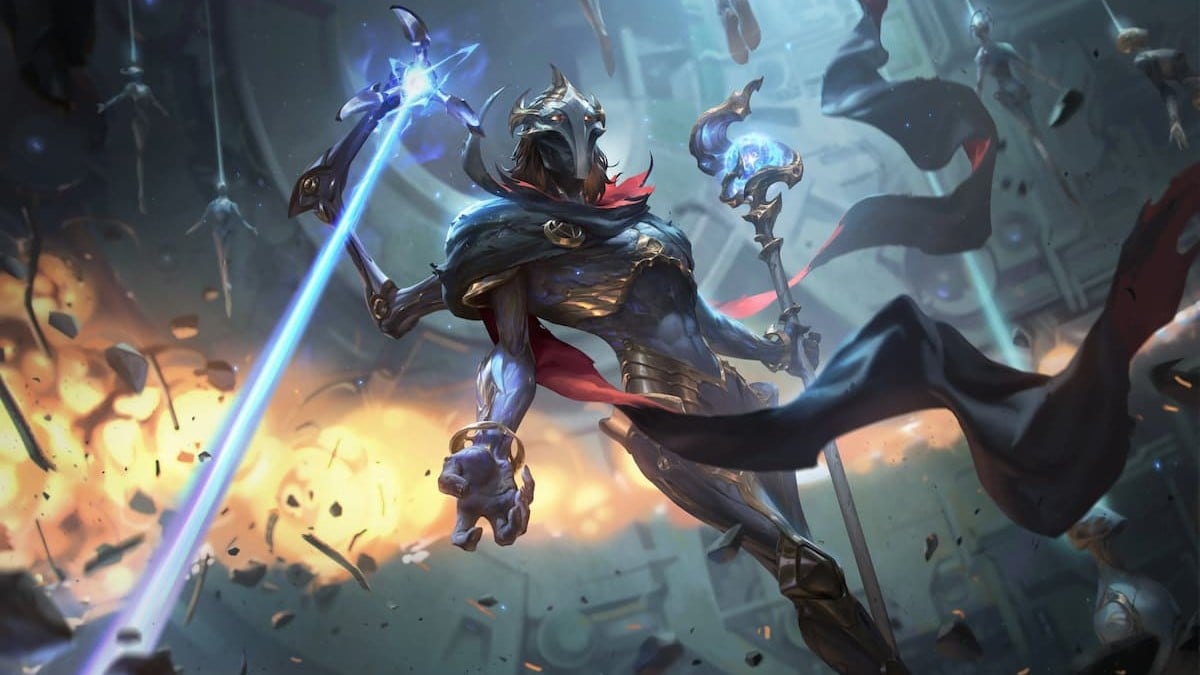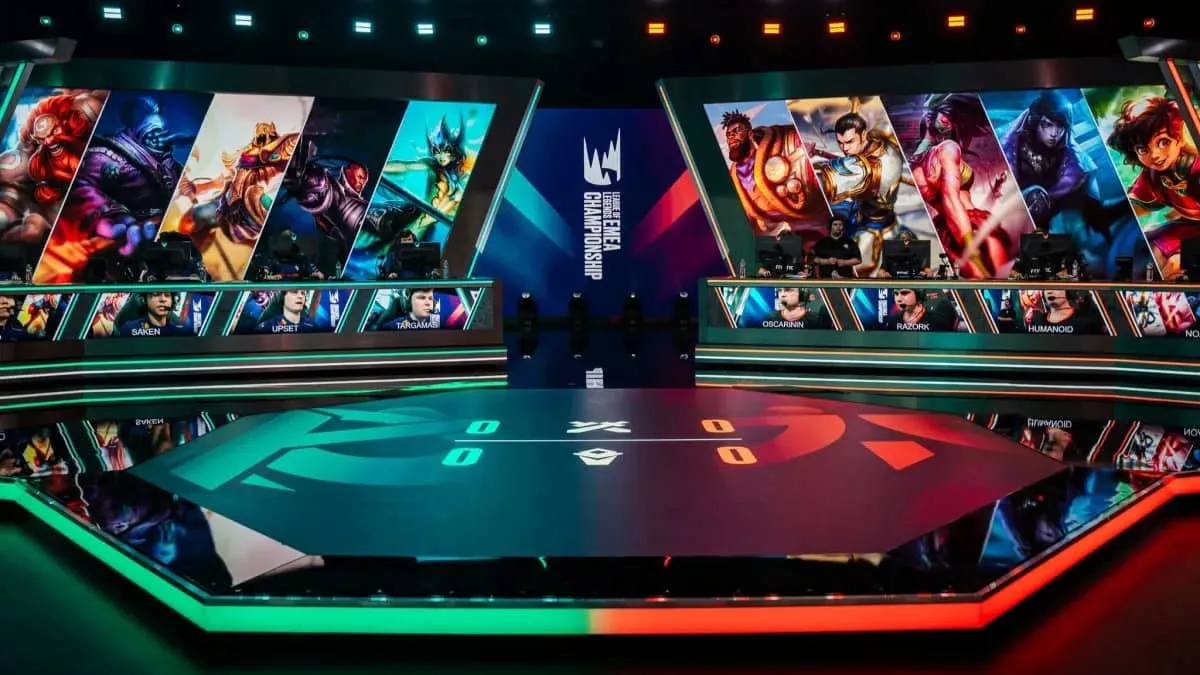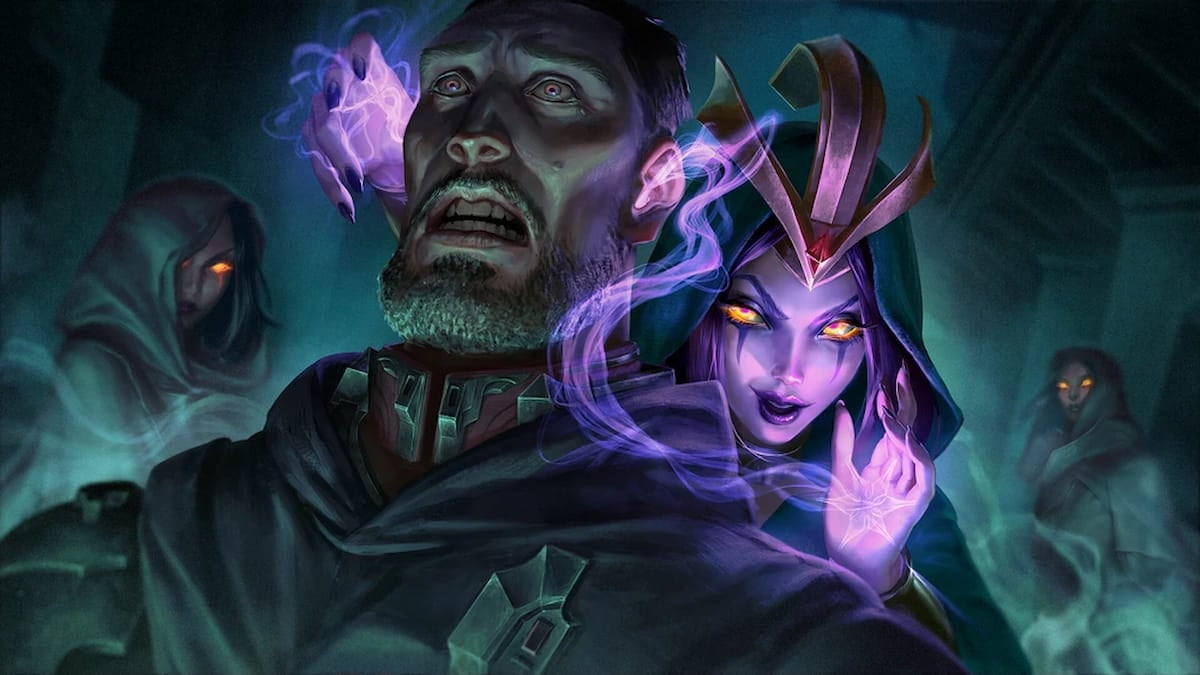To me, this is the most exciting world championship since Season 2, but for very precise reasons.
Before most big international events there are always common strains of thought among the community about what regions are strong, what players are strong, and the East vs. West gap. Hype trains are built and derailed, but often, general thought moves in the right direction.
The story of League e-sports has been one of strong Eastern dominance, its inception occurring during season 2, with its seeds planted with Azubu Blaze’s visit to the United States and CLG’s inability to climb particularly far in the OGN tournament. This storyline came to fruition during Season 2 Worlds, a tournament which gave us an all Asian final. At this point, Eastern supremacy was not set in stone due to the excellence of teams like CLG.EU and Moscow 5. Fnatic’s strong performance at IEM and Gambit Gaming’s victory over Blaze and Frost stalled the growth of complete Eastern superiority quite a bit.
The Korean-Chinese grasp over the competitive scene truly took off during season 3 and beyond, when the brands that had previously reigned in StarCraft hedged their bets and entered the League scene, bringing (but mostly enhancing) with them one of the defining features of Korean e-sports: infrastructure.
Since then, the story of e-sports from a global context has remained static. Ask any of the Western pros, coaches, analyst, or casters what makes the East command the world stage, and they will all tell you the same fact: advanced infrastructure derived from culture.
This fact is now ingrained in e-sports psyche, leading to common story thread that the East vs. West gap is huge and nearly insurmountable. There was a lot of truth in that, but while most people have been focused on the theme of Eastern domination, many interesting story threads and growing trends have been ignored. The root of this disregard is solidly grounded in something even I am guilty of, strong Eastern bias.
To me, the Season 5 Championship promises to bring the emergence of these new trends into the mainstream eye, sparking a brand new storyline for League of Legends professional play. In the same way Season 2 World Championships showcased the growing power of the east, this World Championship promises to bring something new. We are standing at the precipice of a new era in League of Legends history, and with it comes new narratives, rivalries, and themes.
The Weakness of the West
This is one of the more overlooked storylines going into this World Championship, but is still worth mentioning. The discourse is mainly focused on a simple fact: Western teams are holistically weaker than their 2014 counterparts. For the most part, that’s true.
The 2014 North American Summer Season is widely considered to have produced the best crop of teams we’ve seen from the region. The 2015 seeds: CLG, slumping TSM, and neo-C9, look in shambles when compared to last year’s TSM, Cloud9, and LMQ. But just like the north american region became weaker, so did Korea.
Before delving too deeply into this trend, the prevalent feeling in the community and the storylines surrounding last year’s championship needs to be addresses.
I remember the Samsung teams were considered untouchable (correctly so).
Najin had just exited their hot streak in the Korean gauntlet and too seemed frightening to face, with Save-Ggoong being hailed as one of the great one-two punches in League of Legends due to their flex picking abilities and carry potential.
Obviously, the East was considered supremely ahead, every Korean team was predicted to get out of groups without too much hassle. Then Alliance scores a perfect game against Najin, C9 beats Najin, and Fnatic beats Blue. For the first time since season 2, Koreans could bleed. Here was Korea, at the height of their power and success, dropping games to 2nd and 3rd seed Western teams.
The Diminishing Gap
Here is where I began to notice the narrowing of macro-level gaps in play between the regions, in the highly controversial TSM vs. Samsung White series.
I might have an unpopular opinion to outline here, and out of fear of being lynched by the armchair analysts, I’ll disclaimer it: I am not a TSM fan.
TSM’s game 3 victory is often regarded as a fluke, and for good reason. Samsung White never had the reputation of being an overly respectful team, bordering on arrogance. In other words, they wouldn’t just beat you, they would pummel you into a 15k gold submission WHILE picking Singed.
To put White’s game 3 loss in context, you have to remember that games 1 and 2 were sub-30 minutes stomps. A cocky Samsung White, completely sure of their ability to toy with TSM, has a bit of fun with their draft. They lock in a late game composition with little to no wave clear against TSM’s mid game spiking champions.

The loss was understandable and excusable, having little to do with TSM’s prowess, but as a direct result of White’s trademark hubris. The same sort of hubris that enticed them into a Singed lock-in during the grand finals.
This loss could be explained.
But what everyone forgets is the fourth game of the series. Team SoloMid is in a 6k gold deficit with a losing composition. Pawn and Imp on their signature champions. Imp has just received his second pentakill in the world championship. By reasonable standards, TSM is minutes away from elimination and should be completely demoralized.
What happens next is what is rarely remembered. TSM out-rotates Samsung White multiple times. Within a short span of a few minutes, SoloMid takes 1 outer turret, 2 inhibitor turrets, and one free inhibitor.



Even when 8k gold deficit, significantly out-farmed and out-picked, Solomid leads 8 turrets to 5.

One victory can be labeled a coincidence. One victory and a significant macro strategy out-play in a key game is an achievement too large to ignore, especially when facing the all-time great Samsung White.
In another quarterfinal match, Cloud9 acquires a 1 game lead, handing a defeat to Samsung Blue in the first game of the series. Unlike TSM’s victory against White, Cloud9’s success cannot be explained away by blaming Blue. The sister squad was never known for their immodest identity as a team. They rarely exhibited overconfidence or the desire to, as Thorin often says, “style” on other teams by playing whatever they wish.
Here was a legitimate victory over an eastern team. Then the impossible almost happened, Cloud9 came within a few auto attacks of forcing the series into a game 5. That would have marked the first time a western team had ever dragged a Korean team so close to defeat.

Overall, Korean teams lost 9 games to non-Korean opponents. Fnatic, Cloud 9, Alliance, and TSM were all able to score victories against the unbeatable powerhouse that was Korea during the 2014 competitive year.
An interesting thought experiment I am sure the Western teams have indulged in is imaging an alternate universe where Samsung White and Blue were avoided.
I doubt anyone can give an honest opinion as to how a Cloud9 vs. OMG series would look. Both Star Horn and TSM lost 3-1 to White. Their victories were both derived from White’s usual showmanship in their pick bans. I doubt anyone can provide an honest assessment as to how TSM vs. Star Horn Royal Club set would pan out (considering their 1-1 record in group stages.)
The Aftermath
1 year has gone by.
The sister teams were gutted and a massive Korean exodus occurred. The Samsung squads broke up nearly instantly after their victory, lured in by money and the promise of an easier avenue to worlds, China. Top and upcoming Korean talent (and infrastructure) was exported to all regions.
It would be an understatement to say Korea lost a lot.
Compiled here is a list of significant losses and some context.
AD CARRY
The most noticeable losses were those of Imp and Deft, who were the undisputed top two in their position. Along with them left the third member in the Korean trifecta of mechanically skilled AD carries, Piglet.
A less considerable loss, but still worth noting is Emperor, who showed promise with the neo-Blaze roster. The AD carry position was left truly dry when it came to star power. In Korea stayed Captain Jack, the aging carry who had a recent resurgence, Bang, who was underwhelming on the SKT S team, and a young OHQ.
MID LANE
Three out of four members of the midlane hierarchy: Dade, Pawn, and Rookie, found new teams in the LPL. While the rumors of Dade burning out due to age and over-practice had some authenticity, he was without a doubt top 4 at that precise moment of time. Pawn and Rookie were still relatively young players and showed potential for growth. Faker remained, his existence elevating Korean mid lane talent to this day.
It is worth noting that this position was not absolutely drained, as right below the top four, talent like GankedbyMom, Coco, and the feast or famine Ggoong remained.
JUNGLE
The top three Korean junglers: Kakao, Dandy and Spirit, who could without a doubt be included in a top 5 worldwide list, crossed the yellow sea. Swift and Daydream, the CJ junglers who showed promise, abandoned their stubborn organization and headed to different regions.
The jungle position was left considerably weaker, as the only big name remaining was the beyond inconsistent and often underwhelming Watch. Jin Air Chaser’s play did not carry the impact as it does today.
SUPPORT
Mata and Heart, the top two supports in Korea, sought success in China. While the two lost were in fact world class talent, the position still retained a slumping Madlife. Support talent seems to be the easiest to replace in every scene, and support talent would grow considerably during the upcoming season. While the losses hurt, the LCK recovered
Top Lane
Likely the position that suffered the least was top lane. While the two best teleport-using top laners left the scene, Korea remained the home of the carry tops. Shy, Save, and SSumday all remained.
Take any other scene and remove most of their top players. Even at a much lesser scale, and try to gauge the impact.
Picture 2014 North America without Bjergsen, Meteos, and Doublelift.
Picture 2013 Europe without Ich, xPeke and Diamondprox.
Picture 2014 China without Cool, Uzi, Namei.
I admit, Korea is a different place. The e-sports wonderland doesn’t always succumb to the same logic as other regions. While on the small-scale, using this reasoning leads to a slippery slope of what-ifs, it can only be described as intense eastern bias to assume that after being stripped of the all-time greats at almost every position, Korea would remain unchanged.
The level of play has decreased to such extent than an entirely different article could be dedicated with comparisons between 2014 OGN summer and 2015 OGN summer.
In the same way the comparative level of skill in the West decreased, Korea took a massive and noticeable hit in nearly every role.
This storyline has been ignored despite it’s unmistakable growth in this year’s international scene.
Korea Today
Incidents like the Koo Tigers taking the international stage and folding under pressure only bring notice to this trend. I heard the reasoning, Koo didn’t bother preparing. That’s understandable, but whereas before CLG could go to their ill-fated Korean bootcamp and struggle against the Xenics teams, a top-tier Korean team can’t advanced to the finals of an IEM with shoddy preparation.
Compare this scenario to the Paris All-Star event in 2014, when a massively slumping SKT T1 K, who was eliminated in the OGN quarterfinals, dominated the entire event (namely Chinese team OMG.) The slumping Telecom didn’t just win, they embarrassed OMG and possibly hung-over Fnatic, picking their world championship skins team. Even a 5th-8th placing Korean team could make global victory look easy.
Referring again to this year, while some analysts might be inclined to ignore Fnatic’s MSI quarterfinal performance due to SKT’s short preparation time, they simultaneously ignore Fnatic’s huge position as an underdog, a rookie team pulling off the impossible task of finally making a game 5 happen.
A year ago Korea was indomitable, now they seem to have a roadblock wherever they go.
Bengi, Koro, Arrow, Wolf, Bang. When compared to the global competition, these are not superior players, not in the same way as Dandy, Deft, Imp, Mata, and Dade were.
Every year shows us that the gap is diminishing. Each World Championship has shown us that even the East can falter. Whether it is Samsung Galaxy Ozone’s inability to adapt to the meta and be consumed during 2013, or Najin White Shield’s extremely underwhelming showing, allowing top tier western teams to get the better of them, the gap is diminishing.
If those feats were possible before the exodus, when Korea was at their peak form, why not now?
Major storylines go mostly unnoticed, like CLG’s fair possibility to go toe to toe with the KOO tigers, since their Xmithie weakness is less likely to be exploited by Koo’s unimpressive jungler: Hojin; or the real potential of an upset occurring in Group D, especially after Zzitai’s warning to not underestimate TSM.
Perhaps one of the biggest biases I’ve seen is treating Fnatic like an underdog when facing third seeds. In a Fnatic vs. Koo Tigers matchup, I would not expect a Tigers victory in a best of five series.
In worlds, there will be no metagame excuses. Fnatic will be aware of Gankplank’s strength is his pick priority, unlike in the European finals. TSM will have been exposed to proper pick-ban priorities, exhausting the excuses used in their regular season losses when triple AP threat compositions failed to do damage. The individual isolated metagames become a world meta, with each team following a similar schematic while keeping a few secrets prepared.
To me, the storyline going into this World championship is not “what will the West do against Eastern powerhouses”, it is “how much has the West caught up and diminished Eastern dominance.”
Keep the faith alive.
For reference: my top 4
LGD
SKT
EDG
Fnatic






Published: Sep 25, 2015 03:44 pm